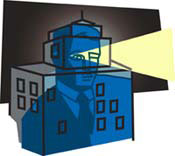For nearly two decades, consulting firms, technology companies, R&D-driven corporations and other knowledge-intensive organizations have made significant investments in “knowledge management” initiatives. These initiatives are intended to facilitate the capture and transfer of company expertise as a way to spur learning and innovation.
But research by Wharton management professor Martine Haas and Morten Hansen, professor of entrepreneurship at INSEAD, indicates that knowledge sharing efforts often fail to result in improved task outcomes inside organizations — and may even hurt project performance. However, organizations that plan carefully before launching a knowledge-sharing initiative, and support these efforts along the way, have a much better chance of adding value, the researchers say.
Haas acknowledges that, initially at least, the premise of their research appears to contradict accepted wisdom. “The expectation has been that knowledge gathering should be beneficial for project teams,” Haas says. “This thinking is consistent with strategic management theories [suggesting] that knowledge resources provide a critical source of competitive advantage for firms.”
Yet in practice, according to Haas, the types of knowledge shared and the design of the organization’s project teams are likely to influence the success or failure of a knowledge-sharing effort. “Companies and other organizations are spending large sums of money to capture and disseminate their stores of knowledge,” she notes. “But a significant number are not getting the full value of their investment. In fact, project teams that are badly designed or use the wrong type of knowledge for their task can see their performance suffer rather than improve as a result of efforts to use knowledge from other parts of the organization.”
In a paper titled, “Different Knowledge, Different Benefits: Toward a Productivity Perspective on Knowledge Sharing in Organizations,” Haas and Hansen identify two distinct ways in which knowledge sharing usually occurs in organizations. “The first way is through direct contact between individuals, typically when one person advises another about completing a specific task,” says Haas. “The defining characteristic of this mode is that the handover of knowledge requires direct contact between the provider and receiver — through meetings, by phone or via e-mail.” Direct contact allows for the transmission of tacit or non-codified knowledge that may be difficult to put in writing.
“In contrast, another way to obtain knowledge is through the use of written documents available from databases or libraries,” Haas notes. “This mode is appropriate for knowledge that can be readily codified, including certain procedures and other data.”
Using Codified Knowledge
In a study of 182 sales teams that were bidding for new client contracts in a management consulting company, Haas and Hansen found that using personal advice from experienced colleagues can improve work quality. As an example, their paper notes that colleagues with experience in areas related to a sales proposal can provide complementary expertise that a team can draw on to generate ideas and identify possible solutions for a prospective client.
The relative richness of direct personal contact also enables colleagues to help a team develop customized and creative products for its client, since they can tailor their advice to the specific situation and engage in two-way discussions to gain insight.
Enlisting the assistance of experienced colleagues who can directly communicate to external constituencies, such as clients, also sends a signal that the organization has deep competence in their area, Haas notes. “Consultants frequently travel to sales meetings with potential clients accompanied by experts from the firm who help them convey the message that the consulting work will be done by competent individuals. Also, the names and credentials of advisors often are listed in proposal documents, identifying them as contributors to the proposal and to the future project work.”
The strategy of obtaining personal advice, however, also involves processing costs. Having colleagues attend meetings or appear on client documents can backfire if these colleagues are unwilling to exert the effort needed to fully understand the client’s situation, adapt their knowledge to the task at hand or respond to client demands. “Teams need to be aware”, says Haas, “that the signaling benefits of expert colleagues can be offset by the possible problems involved.”
Further, contacting colleagues who might be able to assist the team and securing their help takes valuable time, both directly and indirectly, when the need to reciprocate arises. Considering the costs of personal advice, the net effect of using this type of knowledge on time savings is unclear and likely to be weak.
One way around this is to utilize codified knowledge, typically electronic documents. According to the researchers, electronic documents affect project performance through the mechanism of reuse, or the proportion of a document’s content that a team can incorporate directly into its project outputs. “In the management consulting context, electronic documents often include detailed information and well-developed analyses, such as market data, algorithms, software code and competitor profiles,” says Haas. “Reuse of existing information and analyses can help teams to avoid duplicating the efforts already expended by others.”
But here, too, processing costs are involved, she notes, since the documents may have to be reworked or augmented to adapt the knowledge they contain to a specific task.
“We find that using codified knowledge in the form of electronic documents saved time during the task, but did not improve work quality or signal competence to clients, whereas in contrast, sharing personal advice improved work quality and signaled competence, but did not save time,” Haas says. “This is interesting because managers often believe that capturing and sharing knowledge via document databases can substitute for getting personal advice, and that sharing advice through personal networks can save time. But our findings dispute the claim that different types of knowledge are substitutes for each other. Instead, we show that appropriately matching the type of knowledge used to the requirements of the task at hand — quality, signaling or speed — is critical if a firm’s knowledge capabilities are to translate into improved performance of its projects.”
While part of the challenge is to use knowledge appropriate for the task, Haas notes that organizations also face the problem of setting up teams in ways that help them take full advantage of the knowledge they use. As the researchers note in their paper, many project teams in knowledge-intensive organizations operate in environments than can interfere with their ability to perform well because they are characterized by overload, ambiguity and politics.
These characteristics create problems when teams attempt to obtain and use knowledge from other parts of their organization. “In overloaded environments, project teams face a multitude of possible issues to address and solutions with which to address them, and as a result of ambiguity, there is little way to know which problems and solutions to select,” Haas says. “Beyond these problems, multiple stakeholders may have personal agendas and interests in the team’s selections that may actually work at cross-purposes with the team’s own efforts.”
‘Time Famine’
In a study of 96 teams in a financial institution, other researchers investigated design features that can help teams avoid such problems by enhancing their processing, sense-making and buffering capabilities. They identified three conditions that can increase the benefits that teams gain from using external knowledge: slack time, work experience and decision-making autonomy.
“The concept of ‘slack’ refers to the availability of resources that go beyond the requirement for regular activities,” notes Haas. “Slack time is the amount of time and attention the team members can commit to the project beyond the minimum required.” Studies have found that “time famine” — or a feeling of having too much to do and not enough time in which to do it — can reduce team productivity.
Teams with insufficient slack time may download large quantities of documents from a database without checking their quality, skim the papers on their desk superficially — missing important information — or fail to solicit sufficiently diverse views by only consulting close colleagues who will return their phone calls promptly. These shortcuts can reduce the benefits of the knowledge inputs they obtain. In contrast, Haas points out, “slack time increases processing capability because team members have more time and attention available to allocate to knowledge-related as well as other task activities.”
In ambiguous situations, meanwhile, team members face multiple interpretations of the information, know-how and feedback they obtain, and they must engage in a continuous process of sense making to construct meaning from these inputs. The level of prior work experience possessed by team members may also create absorptive capacity that facilitates the assimilation, interpretation and application of new knowledge, Haas and Hansen note in their paper.
Research points to the conclusion that prior experience generates tacit knowledge that enhances a team member’s ability to interpret external knowledge appropriately and apply it effectively, notes Haas in a 2006 paper titled, “Knowledge Gathering, Team Capabilities, and Project Performance in Challenging Work Environments.” Additionally, prior experience tends to help team members move up their own learning curves, helping them to build on past successes and avoid past mistakes when they interpret and apply external knowledge.
Consequently, teams with members who have more years of work experience — with the focal organization or with other companies — possess greater capability to make sense out of chaos. Further, Haas suggests, team members with longer organizational tenure can make better judgments about how to interpret and apply external knowledge in ways that are appropriate in the particular organizational setting, compared with team members who are relatively new to the organization.
In addition to staffing teams with experienced members, if possible, and giving them sufficient slack time, Haas argues that an organization’s project teams should be given sufficient autonomy to make their own decisions. “While many outsiders who provide information, know-how and feedback to team members do not attempt to influence the team unduly, others may promote their own agendas and interests through distortion or manipulation,” she says. “If a team cannot buffer itself against efforts to excessively influence its decisions, its project may be derailed by these external agendas and interests.”
As Haas notes in her earlier paper, “the buffering capability of a team is greater if it has more autonomy, or collective control, over critical decisions about its objectives, resources, design and processes. When team members have the ability to make independent decisions, they can reject influence attempts that might harm the project and resist giving in to potentially harmful external demands about critical task-related decisions.”
In turn, she adds, outsiders tend to interpret greater autonomy as a signal that a team is more capable, making external interference less justifiable. Finally, the buffering advantages of autonomy also can enhance the processing and sense-making capabilities of project teams by freeing the team members to focus more energy on their activities.
Leveraging Knowledge Successfully
Early organizational design research in the 1970s focused on arrangements that increase exchanges of information across internal boundaries, such as official boundary-spanning roles or cross-functional taskforces, Haas points out in her earlier research. Subsequent research on project teams emphasized the importance of going beyond the team’s boundaries to find valuable information for the task.
Recent studies of social networks have further illuminated the types of interactions that facilitate information exchanges in organizations, she adds. These examinations of the social side of knowledge sharing have been complemented by research on knowledge management technologies, including electronic database systems and communication innovations ranging from e-mail to teleconferencing.
But for the most part, according to Haas’ earlier paper, studies of knowledge gathering have overlooked the costs involved, as well as the difficult problems faced by teams in environments characterized by overload, ambiguity and politics. Yet even if teams manage to gather knowledge successfully, the benefits of gathering that knowledge may be limited by such costs and problems, especially if the teams fail to match their knowledge gathering efforts to the task requirements or lack the capabilities to utilize the knowledge effectively.
Haas’ most recent research efforts draw upon studies in the consulting and financial industries, but she says the underlying issues may be found in many organizations that depend on knowledge sharing efforts, including research and development teams in consumer goods, pharmaceuticals and other manufacturing settings, as well as legal, accounting and other professional service firms.
A central concern that these environments usually share is that their projects are non-routine, according to Haas. The difficulties inherent in performing successfully on innovative projects are increased further by the rapid pace of change in many knowledge-intensive industries, she adds.
Overall, research by Haas and Hansen suggests that organizations that care about knowledge sharing must look beyond intermediate goals — such as promoting knowledge capture, search and transfer — when setting up and supporting initiatives in this area. To effectively leverage knowledge sharing activities, they must consider the costs as well as the benefits of knowledge sharing processes, and make sure they understand the implications for task-level performance outcomes.
Moving beyond a focus on knowledge sharing itself as the outcome that firms are trying to maximize, Haas and Hansen’s research has identified three dimensions of task performance — work quality, time savings and signals of competence — that are often critical to the productivity of knowledge work.
The first key implication is that it is unsafe to assume that more knowledge sharing is always better. In fact, the researchers note, using too much of the wrong type of knowledge can harm project performance because there are costs as well as benefits involved. The second key implication is that it unsafe to assume that the net effects of using even the right type of knowledge are always positive. Instead, the design of a project team affects its ability to achieve the desired advantages of knowledge sharing. It is not uncommon for organizations to install costly knowledge management systems, such as document databases, or to spend time promoting knowledge-sharing forums among employees and others.
“These are big investments,” says Haas, “and organizations need to understand how to take advantage of them most effectively if they are to fully deliver on the tantalizing promises they offer.”



